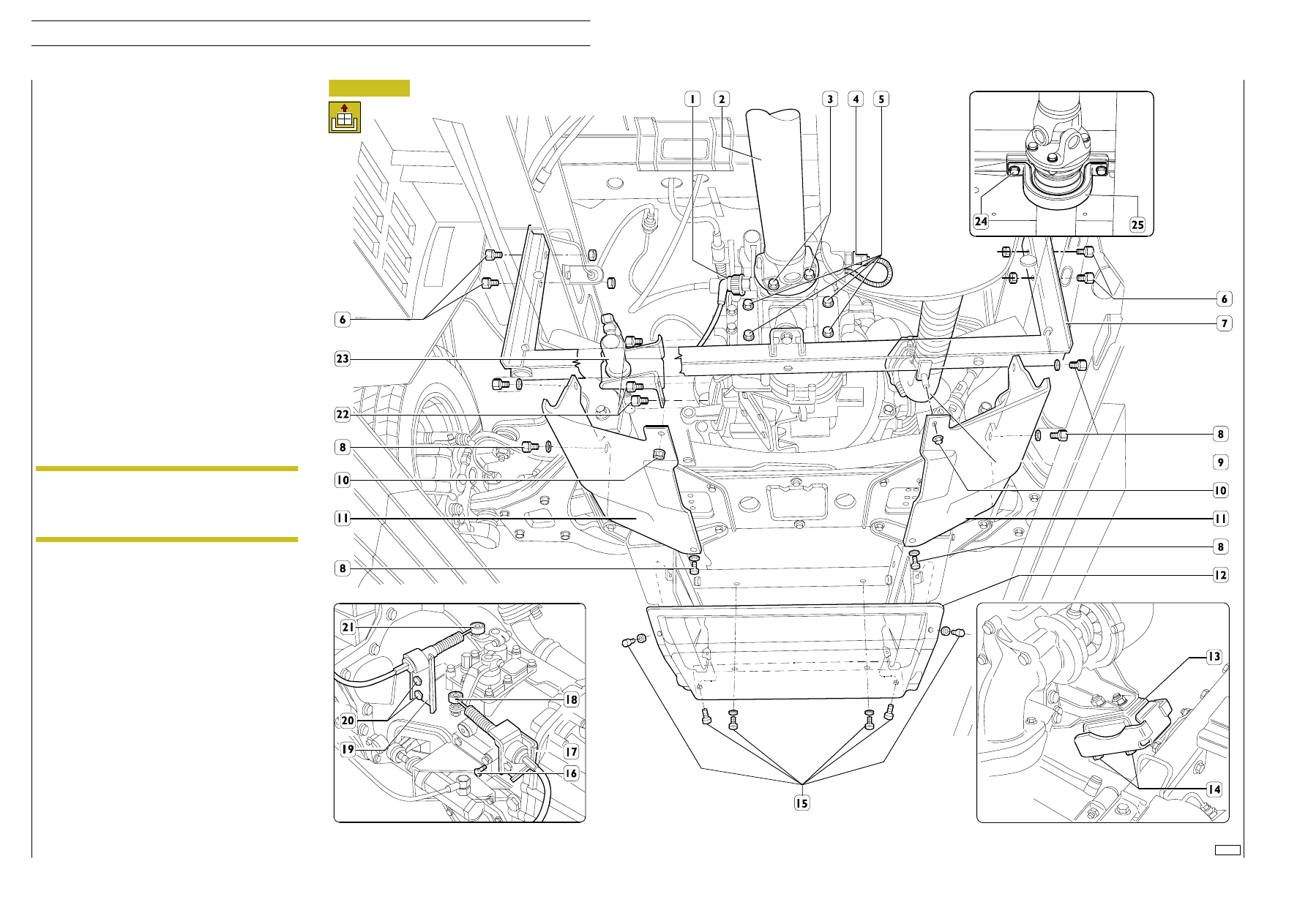Iveco Daily. Manual - part 145

- Disconnect the screws (16 and 20) securing the brackets
(17 and 19) and disconnect the ”bowdens” (18 and 21)
from the gearbox.
- Unscrew the fixing screws (22), move the clutch control
cylinder (23), with its bracket, and fasten it to the chassis
frame appropriately.
- Remove the sealing from the ring nut (1), unscrew it and
disconnect the speedometer control cable.
- Disconnect the electrical connection (4) from the
reversing light switch.
- Disconnect the exhaust pipe (9) from the turbocharger
outlet pipe.
- Put a jack under the gearbox to support it.
- Disconnect the bracket supporting the gearbox on the
rear crosspiece by undoing the four screws (5).
- Unscrew the fixing screws (6) and remove the crosspiece
(7) supporting the gearbox complete with the
gearbox/support bracket.
- Remove nuts (14) securing elastic supports (13) to the
chassis.
- Remove bolts (3) securing drive shaft (2) to the gear shift.
Remove, if necessary, screws (24) securing elastic support
(25) to the chassis, then properly secure the drive shaft
to the chassis.
- Take the jack out from under the gearbox.
- Lift the engine assembly and take it out of the engine bay.
If it is necessary to detach the gearbox from the engine, take
out the fixing screws and remove the starter motor.
Take out the fixing screws and detach the gearbox from the
engine.
Should this prove difficult, take the inspection cover off the
front cover of the gearbox.
Using special pliers, open out the circlip retaining the
thrust-bearing sleeve to the clutch plate while detaching the
gearbox from the engine.
The power unit must be removed from the engine
compartment with the greatest care, to avoid
damaging the remaining parts on the vehicle, in
particular the steering box oil pipes.
NOTE
102188
Figure 0/4
492/6
F1C ENGINE
D
AILY
Revi - February 2005